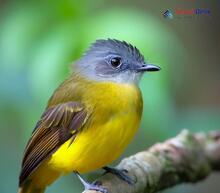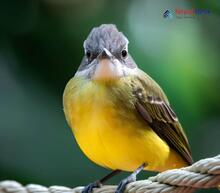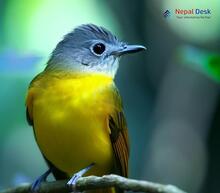The world of birds is vast and fascinating, with various species stretching across all continents and climates. One such group of birds captivating both bird lovers and researchers alike is the Culicicapa genus. The genus was erected by Robert Swinhoe in 1871 and is restricted to Southeast Asia. Now, in this article, we will delve into the evolutionary tree of this extraordinary genus and explore its presence in the breathtaking country of Nepal.
The Culicicapa Genus: A Brief Introduction
Belonging to the family Muscicapidae, which also includes flycatchers, the Culicicapa genus consists of two unique species: the Grey-headed Canary-flycatcher (Culicicapa ceylonensis) and the Citrine Canary-flycatcher (Culicicapa helianthea). Both species share common traits such as bright yellow underparts and distinctive calls, setting them apart from other flycatchers. The Grey-headed Canary-flycatcher inhabits a wide range of forests from India to Southeast Asia, while the Citrine Canary-flycatcher favors subtropical and tropical montane regions in its vast distribution area throughout Asia.
Unraveling the Evolutionary Tree
The evolutionary history of the Culicicapa genus traces back millions of years. Researchers have employed elaborate genetic analysis techniques to understand their lineage, which has been challenging due to their close association with other flycatchers. Recent molecular studies have now placed both species in the same clade, suggesting they split from a common ancestor around 8-9 million years ago.
Moreover, these studies revealed that although both Grey-headed and Citrine Canary-flycatchers belong to the Muscicapidae family, their closest relatives are actually genera Cyornis and Niltava. The discovery has not only enhanced our understanding of these captivating birds but also highlighted just how much there is still left to uncover in their evolutionary tree.
Presence in Nepal: A Birder's Paradise
Nestled between China and India, Nepal is a treasure trove of biodiversity with an incredible array of bird species. Among these flying wonders are the Grey-headed Canary-flycatchers, who have made their home in the lush forests across the country. These birds thrive in various habitats, from subtropical and tropical forests to Himalayan foothills. Birdwatchers traveling to Nepal can find these enchanting creatures throughout the year, flitting from branch to branch and feeding on insects, adding a touch of vivid color to the already picturesque landscape.
In summary, the Culicicapa genus presents intriguing insights into the complex evolutionary tree of birds while adding a flair of vibrancy to Nepal's diverse ecosystem. As researchers continue to explore these remarkable species, bird lovers and enthusiasts can appreciate their captivating presence across the Asian landscape, especially in Nepal's breathtaking forests. So, whether you're a seasoned ornithologist or a casual birdwatcher, be sure not to miss your chance to witness these yellow marvels while venturing into Nepal's natural gemstones.




